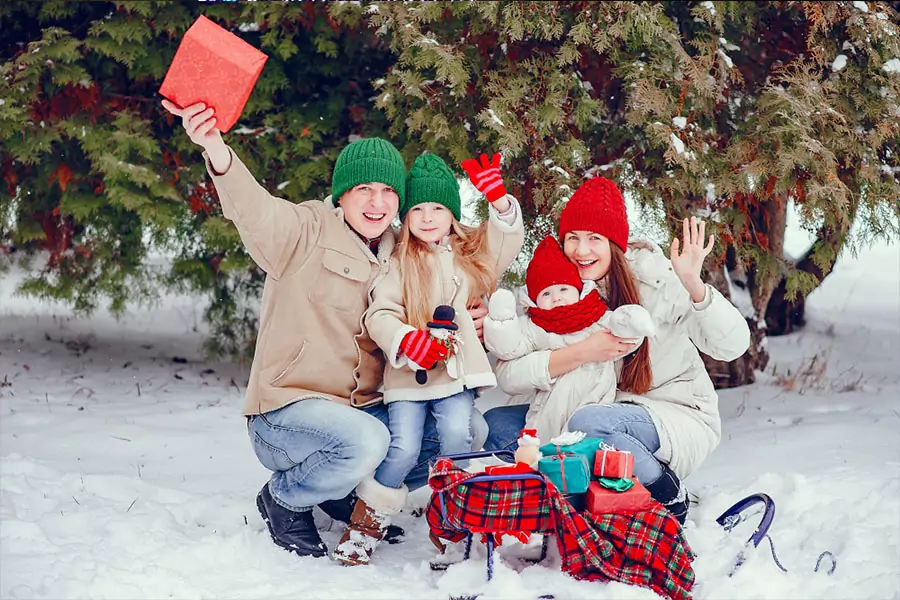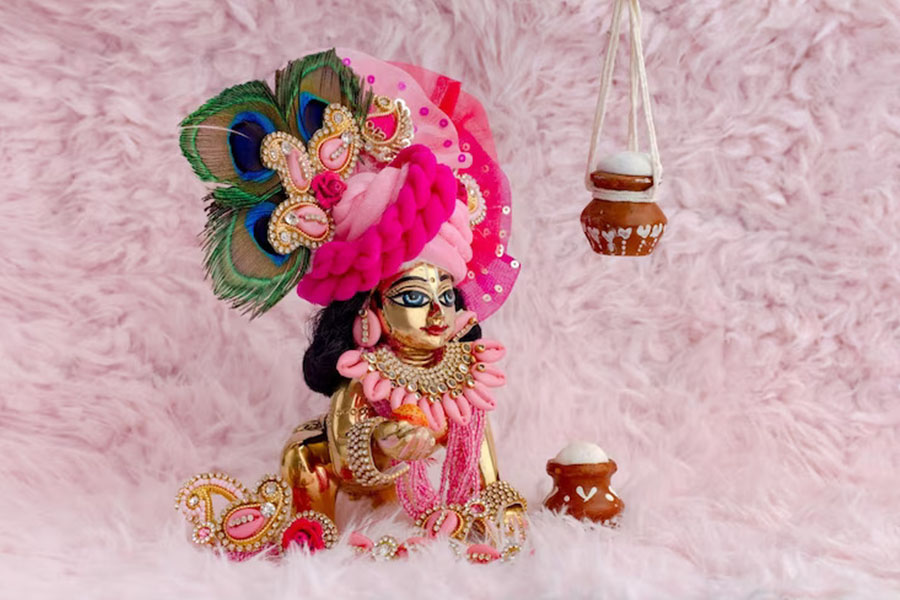15 Festivals in India – Holi, Dussehra, Diwali, Eid, Janmashtami

In India, a land of diverse cultures and traditions, vibrant festivals reflect the country’s rich heritage. From the colorful celebrations of Holi to the spiritual essence of Diwali, Indian festivals are not just events; they are experiences that unite people across religions, languages, and regions. Each festival, with its unique customs and rituals, offers a glimpse into the heart of Indian culture.
A Panoramic View of Indian Festivals
India celebrates a myriad of festivals throughout the year, each with its own significance and charm. These festivals can be broadly categorized into religious, harvest, and cultural celebrations. Let’s take a closer look at some of the most celebrated festivals across the country.
Religious Festivals
1. Diwali: The Festival of Lights

Diwali, also known as Deepavali, stands as one of the most significant Hindu festivals. It symbolizes the victory of light over darkness and good over evil. People across India celebrate Diwali with great enthusiasm by lighting oil lamps, bursting fireworks, and exchanging sweets and gifts. The festival commemorates Lord Rama’s return to Ayodhya after his 14-year exile and victory over the demon king Ravana.
2. Holi: The Festival of Colors

Holi, the festival of colors, brings joy and fervor to every corner of India. Marking the arrival of spring, Holi is a time when people come together to smear each other with vibrant colors, sing and dance, and enjoy traditional sweets like gujiya. The festival also signifies the triumph of good over evil, commemorating the burning of the demoness Holika.
3. Eid-ul-Fitr: The Festival of Breaking the Fast

Eid-ul-Fitr, celebrated by Muslims worldwide, marks the end of Ramadan, the Islamic holy month of fasting. This festival is a time of prayer, charity, and feasting. Muslims attend special prayers at mosques, exchange gifts, and enjoy delicious meals with family and friends, with sweet dishes like seviyan being a staple.
4. Christmas: Celebrating the Birth of Jesus Christ

Christmas, celebrated on December 25th, marks the birth of Jesus Christ and is observed with joy and merriment. Churches across India are beautifully decorated, and the midnight mass holds significant importance. People exchange gifts, sing carols, and indulge in festive treats like plum cake and wine.

Durga Puja are festivals dedicated to worshipping Goddess Durga. Navratri, celebrated over nine nights, involves fasting, prayers, and traditional dances like Garba and Dandiya, especially in Gujarat. Durga Puja, predominantly celebrated in West Bengal, features grand processions, cultural performances, and elaborate feasts, culminating in the immersion of the goddess’s idol in water.
Harvest Festivals
6. Pongal: The Harvest Festival of Tamil Nadu

Pongal, celebrated in Tamil Nadu, is a four-day harvest festival that honors the Sun God and the natural elements that support agriculture. Families cook the traditional dish “Pongal,” made from freshly harvested rice, in earthen pots. Homes are decorated with kolam (rangoli), and cattle are adorned with garlands as a show of gratitude for their role in farming.
7. Makar Sankranti: The Festival of Kites

Makar Sankranti, celebrated in January, marks the Sun’s transition into Capricorn, symbolizing the end of winter and the onset of longer days. People, especially in Gujarat, fly colorful kites in celebration. The festival also involves sharing sweets made of sesame seeds and jaggery, symbolizing the warmth and sweetness of the season.
8. Baisakhi: The Punjabi New Year
Baisakhi, celebrated in Punjab, is both a harvest festival and the Punjabi New Year. It commemorates the formation of the Khalsa Panth by Guru Gobind Singh in 1699. The festival features vibrant Bhangra and Gidda performances, community fairs, and traditional dishes like makki di roti and sarson da saag.
9. Onam: The Harvest Festival of Kerala

Onam, the harvest festival of Kerala, celebrates the return of the mythical King Mahabali to his kingdom. The festival lasts for ten days and includes cultural events, traditional dance forms like Kathakali, and famous boat races. The highlight of Onam is the grand feast known as Onam Sadhya, featuring a variety of vegetarian dishes served on a banana leaf.
10. Lohri: The Punjabi Winter Festival

Lohri, celebrated in January, marks the end of winter and the arrival of longer days. The festival holds special significance for the farming community in Punjab. Families gather around a bonfire, sing traditional songs, and offer sweets, puffed rice, and popcorn to the flames as a way of thanking the Sun God for a good harvest.
Cultural Festivals
11. Republic Day: Celebrating India’s Constitution

Republic Day, observed on January 26th, marks the adoption of the Indian Constitution in 1950. The main celebration takes place in New Delhi with a grand parade showcasing India’s military might, cultural diversity, and achievements. The day is also celebrated in schools, colleges, and government offices across the country with flag-hoisting ceremonies and patriotic programs.
12. Independence Day: Commemorating India’s Freedom

Independence Day, celebrated on August 15th, marks India’s freedom from British rule in 1947. The day involves flag-hoisting ceremonies, patriotic songs, and cultural performances. The Prime Minister of India addresses the nation from the Red Fort in Delhi, paying tribute to the freedom fighters who sacrificed their lives for the country’s independence.
13. Ganesh Chaturthi: Honoring the Elephant God

Maharashtra celebrates Ganesh Chaturthi, a festival dedicated to Lord Ganesha, the remover of obstacles. The festival lasts for ten days, during which people worship beautifully crafted idols of Ganesha in homes and public pandals (temporary shrines). The festival concludes with the immersion of the idols in water, symbolizing Ganesha’s return to his heavenly abode.
14. Janmashtami: Celebrating the Birth of Lord Krishna

Janmashtami, the celebration of Lord Krishna’s birth, is observed with much devotion across India. The festival involves fasting, singing devotional songs, and enacting scenes from Krishna’s life, especially the “Dahi Handi” event, where teams of young men form human pyramids to break a pot of curd suspended high above the ground.
15. Raksha Bandhan: The Bond of Protection

Raksha Bandhan, celebrated across India, honors the bond between brothers and sisters. On this day, sisters tie a rakhi (a sacred thread) on their brothers’ wrists, praying for their well-being, while brothers pledge to protect their sisters. This festival reinforces family ties by exchanging gifts and sweets.
Conclusion
The festivals of India are more than just celebrations; they reflect the country’s deep-rooted traditions, diverse cultures, and the shared joy of community. Each festival, with its unique customs and rituals, offers an opportunity to experience the essence of India. Whether you are partaking in the joyous colors of Holi, the spiritual lights of Diwali, or the cultural festivities of Republic Day, India’s festivals invite you to immerse yourself in the vibrant tapestry of its cultural heritage.
FAQs
1. What are the most famous festivals in India?
Some of the most famous festivals in India include Diwali, Holi, Eid-ul-Fitr, Christmas, and Navratri.
2. Diwali is celebrated in India in what way?
Diwali involves lighting oil lamps, bursting fireworks, decorating homes, and exchanging sweets and gifts. It signifies the victory of light over darkness.
3. What is the significance of Holi?
Holi is the festival of colors, marking the arrival of spring and symbolizing the victory of good over evil. It involves playing with colors, singing, dancing, and enjoying festive sweets.
4. Tamil Nadu’s harvest festival is known as which festival?
Pongal is the harvest festival of Tamil Nadu, celebrated to honor the Sun God and express gratitude for the harvest.
5. What is the cultural significance of Republic Day in India?
Republic Day celebrates the adoption of the Indian Constitution. The main event is a grand parade in New Delhi, showcasing India’s military strength, cultural diversity, and achievements.


